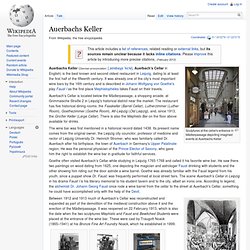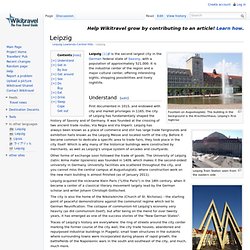

Metaphorical Analysis : The powerful research technique you're not using: The powerful research technique you're not using. “There is an interesting dance here, in that data (observations, equations, structural formulas, spectra) are useless without the narrative, theoretical framework to make a story out of them.”

—Raold Hoffman Every UX designer faced with a 6-inch stack of research notes and a looming deadline has wanted to take a nap and wake up with the most important insights neatly tagged. While we can’t offer that exactly, there is an incredibly powerful and fun shortcut that many designers aren’t using: working with metaphor. You might have learned about metaphor as a literary device, or a component of interface design (e.g. the folder and file system as an organizational concept); it is those, but more importantly it’s a highly sophisticated form of human play that allows us to find associations and hypotheses quickly through the power of unconscious processing. Metaphor “Have you guys heard any of my metaphors yet? Look at metaphor in its native environment for a minute: poetry. What’s freedom for? Oldest Leipzig bar (?) Auerbachs Keller. Sculptures at the cellar's entrance in Mädlerpassage depicting imagined events at Auerbachs Keller Auerbachs Keller (German pronunciation: [ˌaʊɐbaχs ˈkɛlɐ], Auerbach's Cellar in English) is the best known and second oldest restaurant in Leipzig, dating to at least the first half of the fifteenth century.

It was already one of the city’s most important wine bars by the 16th century and is described in Johann Wolfgang von Goethe's play Faust I as the first place Mephistopheles takes Faust on their travels. Auerbach's Cellar is located below the Mädlerpassage, a shopping arcade, at Grimmaische Straße 2 in Leipzig's historical district near the market. The restaurant has five historical dining rooms: the Fasskeller (Barrel Cellar), Lutherzimmer (Luther Room), Goethezimmer (Goethe Room), Alt-Leipzig (Old Leipzig), and, since 1913, the Großer Keller (Large Cellar). There is also the Mephisto Bar on the floor above available for drinks. Statue of Mephisto and students he has bewitched. Oldest Leipzig coffee bar (1711) For Coffe Baum - Wikipedia.
Zum Arabischen Coffe Baum Zustand 1964 Zustand 2008 Zum Arabischen Coffe Baum ist ein Leipziger Kaffeehaus.

Es ist ein kultur- und kunstgeschichtliches Baudenkmal (erstmals 1556 erwähnt) und zählt – neben dem Café Procope im 6. Arrondissement in Paris – zu Europas ältesten Kaffeeschänken. Heutige Nutzung[Bearbeiten] Auf mehrere Stockwerke verteilt befinden sich in dem Gebäude in der Kleinen Fleischergasse 4 heute ein Restaurant und mehrere verschiedene Café-Räume. Name[Bearbeiten] Ein außergewöhnliches Hauszeichen aus dem Jahre 1720 gab dem Haus seinen Namen „Zum Arabischen Coffe Baum“: Die barocke Bildhauerei zeigt einen Orientalen, der einem Putto eine Schale Kaffee reicht. Bekannte Gäste[Bearbeiten] Oldest Leipzig restaurant (1466) Gosenschenke "Ohne Bedenken" Leipzig. Even as early as 1600 years ago, the old Egyptians did by no means scoff at a glass of vermouth as a stomach therapy.
The origin of the current recipe and the creator of absinthe are shrouded in mystery, since the sources are interpreted differently. Apparently, one of the creators of absinthe was Dr. Pierre Ordinaire, a French physician and refugee from the revolution, who eventually mixed the absinthe with vermouth (Artemisia Absintheium) and prescribed it to his patients. Other sources claim that it was a member of the Henriod family who distilled absinthe as early as in the mid-18th century and praised it as a remedy. But one thing is for sure: In 1797, a certain Major Dubied acquired the recipe and established, together with his son Marcellin and his son-in-law Henry Louis Pernod, an absinthe distillery which was moved to the French city of Pontarlier in 1805. As a result of the French invasion into Algeria in 1830, Pernod raised its daily output from 400 to 20 000 litres.
Mitteldeutscher Verkehrsverbund (MDV) - Startseite. Leipzig travel guide. Fountain on Augustusplatz.

Leipzig. Leipzig (/ˈlaɪptsɪɡ/; German pronunciation: [ˈlaɪ̯pt͡sɪç] ( )) is a city in the federal state of Saxony, Germany.

It has around 540,000 inhabitants[2] and is the heart of the Central German Metropolitan Region. Leipzig is located about 150 kilometres (93 miles) south of Berlin at the confluence of the White Elster, Pleisse, and Parthe rivers at the southerly end of the North German Plain. Leipzig has been a trade city, since, at least the time of the Holy Roman Empire,[3] sitting at the intersection of the Via Regia and Via Imperii, two important Medieval trade routes.
At one time, Leipzig was one of the major European centers of learning and culture in fields such as music and publishing.[4] After World War II, Leipzig became a major urban center within the German Democratic Republic (East Germany), but its cultural and economic importance declined,[4] despite East Germany being the richest economy in the Soviet Bloc.[5] History[edit] Name[edit] Origins[edit] Leipzig old town from above.